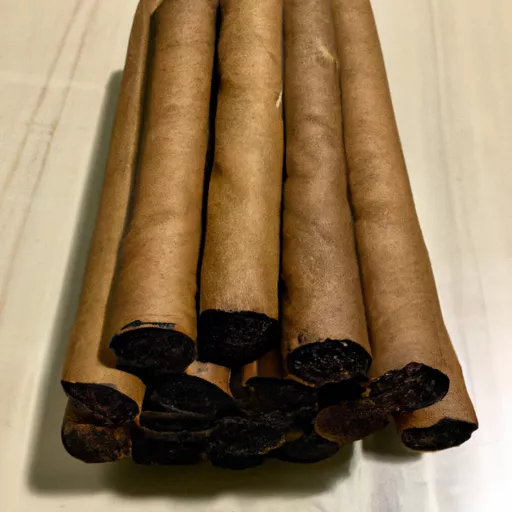
Growing up in a small town in the southern United States, little cigars were a staple in my community. These small, thin cigars were a popular and affordable alternative to traditional cigarettes. As a teenager, I was intrigued by their unique appearance and distinct flavor, and as an adult, I have come to appreciate their rich history and undeniable charm.
To understand the allure of little cigars, it is important to first understand what they are. Unlike traditional cigars which are larger and hand-rolled, little cigars are machine-made and typically measure around 3 inches in length and have a ring gauge of 20 or smaller. This size makes them convenient for on-the-go smoking and allows for a quicker smoke break compared to a traditional cigar. They also come in a variety of flavors such as vanilla, cherry, and even chocolate, making them a popular choice for those looking for a more flavorful smoking experience.
But what truly sets little cigars apart is their rich history. Little cigars were first introduced in the late 1800s when tobacco manufacturers saw an opportunity to create a smaller, more affordable cigar that could compete with traditional cigarettes. These cigars were often made with leftover scraps of tobacco, making them cheaper to produce and therefore more accessible to the working class. This accessibility and affordability made little cigars a popular choice among laborers and factory workers.
In the early 20th century, little cigars became even more prevalent with the introduction of the cigar rolling machine. This allowed for mass production of little cigars, making them even more affordable and widespread. They became a common sight in convenience stores and gas stations, further solidifying their place in American culture.
Despite their popularity, little cigars have faced their fair share of criticism. Many health experts point out that little cigars still contain nicotine and other harmful chemicals, making them just as dangerous as traditional cigarettes. In fact, a study by the Centers for Disease Control and Prevention found that little cigars can be just as addictive as cigarettes and can increase the risk of heart disease and lung cancer. However, many little cigar enthusiasts argue that the smaller size and shorter smoke time make them a healthier alternative to traditional cigars.
In recent years, the popularity of little cigars has seen a resurgence thanks to the increasing popularity of cigar lounges and cigar bars. These establishments offer a laid-back atmosphere where cigar enthusiasts can gather and enjoy a smoke together. Little cigars, with their shorter smoke time, make them a more convenient choice for these types of social settings.
But beyond just being a popular smoking option, little cigars have also become a fashion statement. Many Hollywood icons, such as Humphrey Bogart and James Dean, were often seen smoking little cigars, giving them an air of sophistication and mystery. Today, many hip-hop and rap artists can be seen incorporating little cigars into their look, further cementing their status as a stylish accessory.
For me, little cigars hold a deeper meaning. As a child, I remember seeing my father and uncles smoking little cigars on the porch after a long day of work. They would sit and talk for hours, the sweet aroma of their cigars filling the air. As I grew older, I too joined in on the ritual, and it became a way for us to bond and connect. Now, whenever I light up a little cigar, I am reminded of those moments and the importance of family and community.
In conclusion, little cigars may be small in size, but they have left a significant mark on American culture. From their humble beginnings as a cheap alternative to traditional cigars to their current status as a fashionable and social smoking choice, these tiny delights have stood the test of time. Whether you enjoy their distinctive flavor, appreciate their rich history, or simply enjoy their social appeal, there’s no denying the charm and allure of little cigars.
